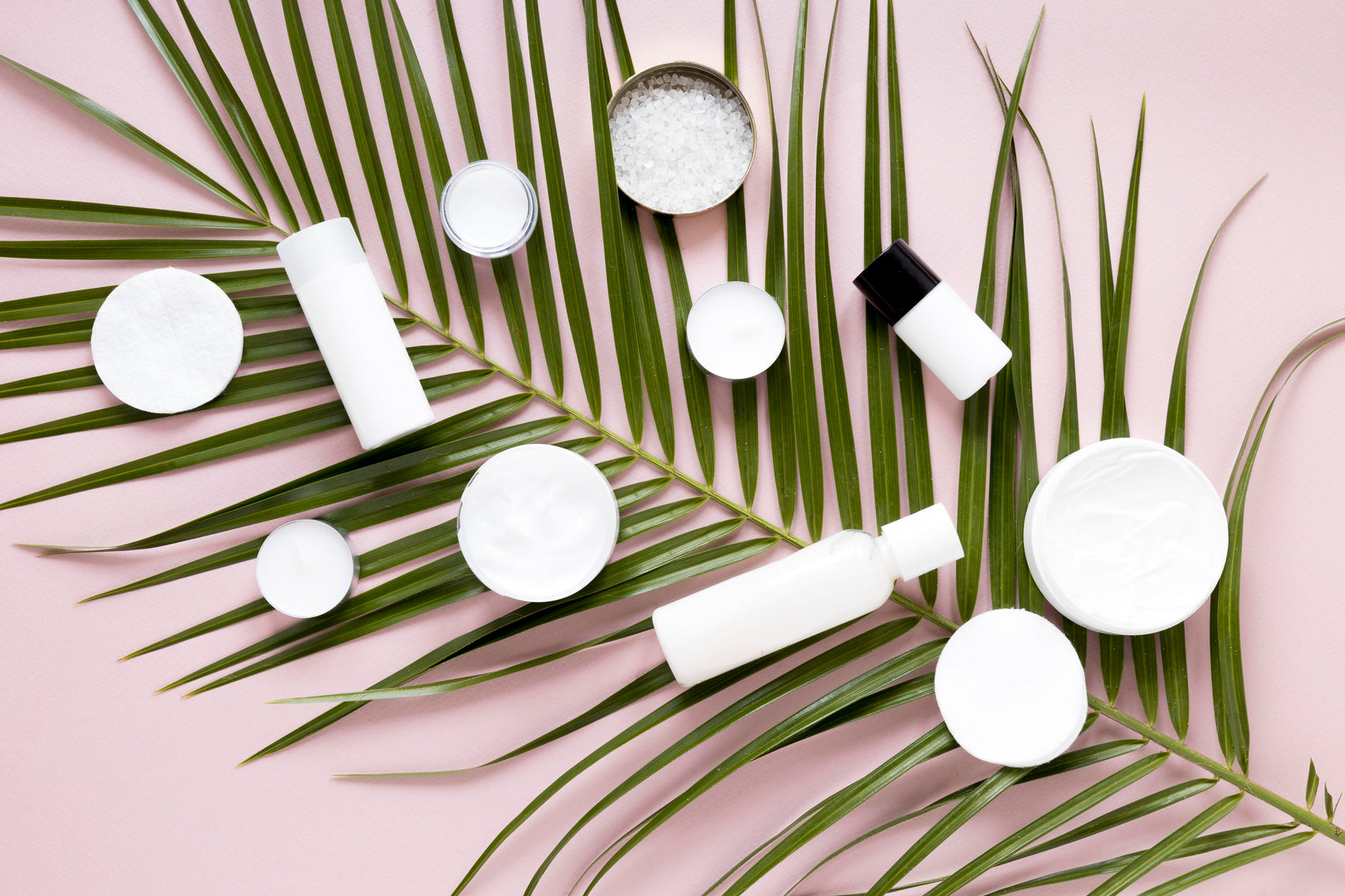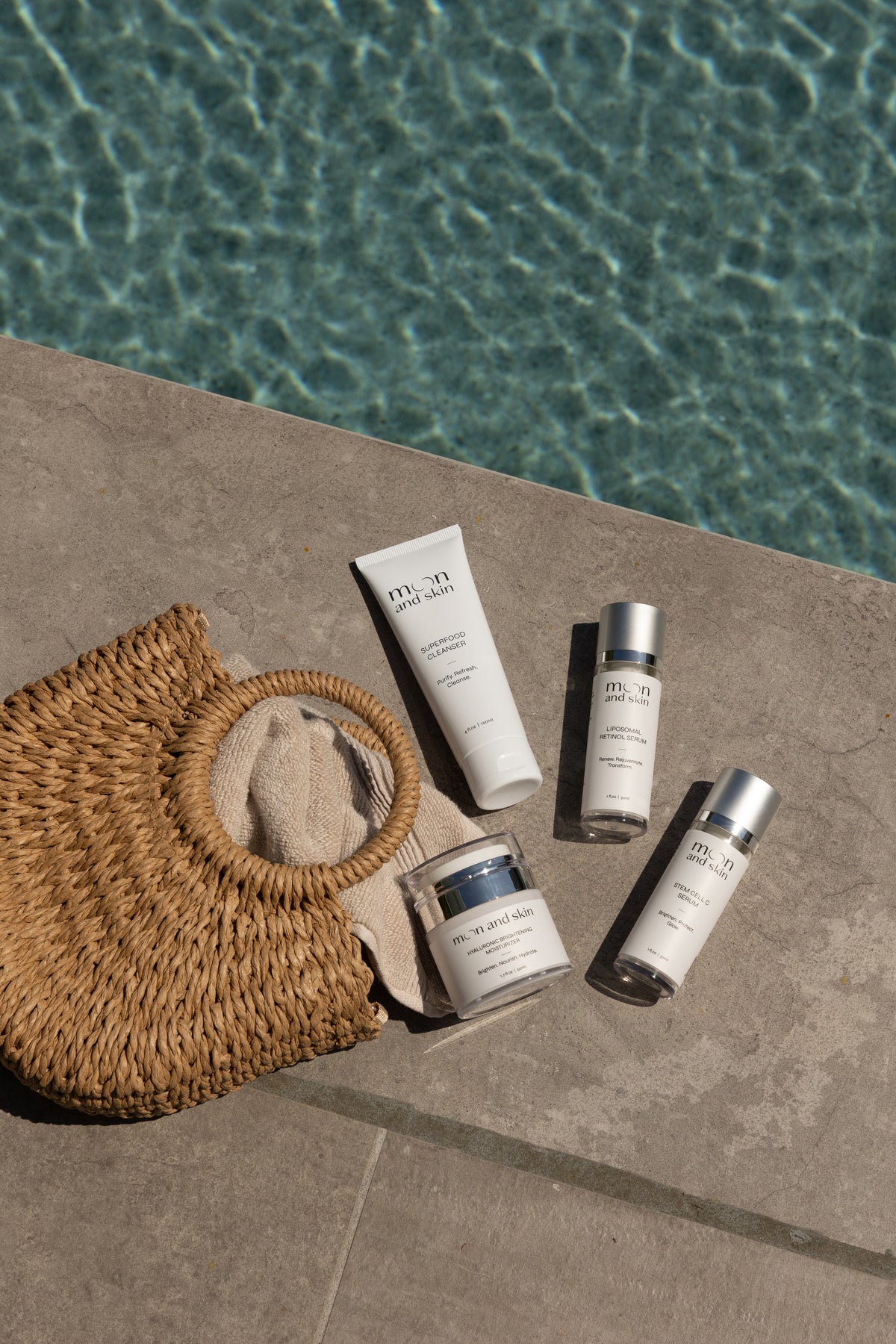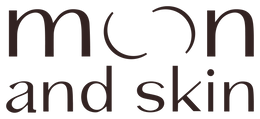Table of Contents
Introduction
Peeling skin can be a frustrating experience, especially when it occurs as a side effect of using retinol, a powerful skincare ingredient known for its anti-aging and acne-fighting properties. Did you know that nearly 50% of users experience some form of irritation when first incorporating retinol into their routines? This statistic underscores the importance of understanding how to manage peeling skin effectively.
At Moon and Skin, we understand that navigating the world of retinol can be confusing and even disheartening. Our mission is to support you in your skincare journey, celebrating your skin through all its phases. In this post, we will explore why retinol causes peeling skin, how to alleviate this common side effect, and the best practices for incorporating retinol into your skincare routine.
Together, we’ll break down the science behind retinol, share practical tips for soothing your skin, and introduce you to our thoughtful formulations that can help you achieve a radiant complexion without the discomfort. By the end of this guide, you’ll be equipped with the knowledge to enjoy the benefits of retinol while minimizing any unpleasant side effects.
Understanding Retinol and Its Effects on the Skin
What is Retinol?
Retinol is a derivative of vitamin A, widely recognized for its ability to promote cell turnover and stimulate collagen production. This means it helps to shed old, dead skin cells and reveal fresh, new skin beneath. While this process is essential for achieving smooth and youthful skin, it can also lead to temporary peeling and irritation, especially for those new to retinol.
Why Does Retinol Cause Peeling Skin?
The primary reason retinol causes peeling skin is due to its influence on the skin's natural exfoliation process. When you start using retinol, it accelerates cell turnover, leading to the shedding of skin cells at a faster rate. This increased turnover can overwhelm the skin, resulting in dryness, redness, and peeling.
Here are some key factors that contribute to this effect:
- Adjustment Period: When your skin is introduced to retinol, it needs time to adjust. This period can last several weeks, during which peeling is common as your skin acclimates to the ingredient.
- Concentration of Retinol: Higher concentrations of retinol are more likely to cause irritation and peeling. It's often recommended to start with a lower concentration and gradually increase it as your skin builds tolerance.
- Frequency of Use: Using retinol too frequently, especially when first starting, can lead to excessive peeling. It's essential to find a balance that works for your skin type.
- Environmental Factors: External factors like climate, humidity, and exposure to sun can exacerbate peeling. Dry or cold weather can strip moisture from the skin, making it more susceptible to irritation.
Strategies for Managing Peeling Skin from Retinol
Now that we understand why retinol can cause peeling skin, let's explore effective strategies to manage and minimize this common side effect.
1. Start Slowly
When introducing retinol into your skincare routine, it's crucial to start slowly. Begin with a low concentration and apply it just once or twice a week. Gradually increase the frequency as your skin becomes accustomed to the ingredient. This gentle approach allows your skin to adjust without overwhelming it.
2. Hydrate and Moisturize
One of the most effective ways to combat peeling skin is to keep it well-hydrated. Make sure to follow up your retinol application with a rich moisturizer. Our Hyaluronic Brightening Moisturizer is an excellent choice, as it is formulated with hyaluronic acid to deeply hydrate and brighten your skin.
Consider incorporating a hydrating serum into your routine as well. Look for ingredients like glycerin and ceramides, which help to lock in moisture and repair the skin barrier.
3. Use the "Retinoid Sandwich" Technique
The "retinoid sandwich" technique involves applying a layer of moisturizer before and after your retinol. This method provides an additional barrier that can help reduce irritation and peeling. Start by applying a thin layer of moisturizer, followed by your retinol, and seal it in with another layer of moisturizer. This technique keeps your skin hydrated while still benefiting from retinol.
4. Avoid Harsh Exfoliants
While it might be tempting to use exfoliating products to address peeling skin, it's essential to avoid harsh scrubs or high-strength chemical exfoliants during this time. Instead, opt for gentle exfoliants that can help slough away dead skin without causing further irritation. Consider incorporating our Superfood Cleanser, which gently cleanses while nourishing your skin.
5. Protect Your Skin
When using retinol, your skin becomes more sensitive to the sun. It's crucial to apply sunscreen daily to protect your skin from UV damage and prevent further irritation. Look for broad-spectrum sunscreen with at least SPF 30. We recommend our Daily Sun Defence SPF50+, which provides excellent protection against harmful UV rays.
6. Listen to Your Skin
Everyone's skin reacts differently to retinol. Pay close attention to how your skin responds and make adjustments as necessary. If you experience persistent peeling or irritation, consider reducing the frequency of application or taking a break from retinol until your skin calms down.
When to Seek Professional Advice
While peeling skin is a common side effect of retinol, there are instances where it may indicate an underlying issue. If you experience severe irritation, persistent redness, or peeling that lasts longer than a few weeks, we recommend consulting with a dermatologist. They can assess your skin condition and provide personalized guidance on how to proceed with your retinol use.
Conclusion
Navigating the world of retinol can be challenging, but with the right knowledge and strategies, you can minimize peeling and enjoy the myriad benefits this ingredient has to offer. Remember to start slowly, hydrate your skin, and protect it from the sun to make your retinol journey as smooth as possible.
At Moon and Skin, we are dedicated to providing clean and thoughtful skincare for every phase of life. Our products, such as the Hyaluronic Brightening Moisturizer and Superfood Cleanser, are designed to support your skin’s health and resilience.
If you’re ready to build a complete skincare routine that nurtures your skin while incorporating retinol, consider our Bundle & Save collection. Together, we can help you achieve your skincare goals while celebrating the unique journey of your skin.
FAQ
Q: How long does peeling from retinol last?
A: Peeling from retinol typically lasts a few weeks as your skin adjusts. If it continues beyond this period, consult with a dermatologist.
Q: Can I use other active ingredients with retinol?
A: It's best to avoid using strong exfoliants or acids (like AHAs and BHAs) at the same time as retinol, especially during the adjustment phase. Once your skin becomes accustomed to retinol, you can gradually reintroduce other actives.
Q: Is it normal to experience redness when starting retinol?
A: Yes, mild redness is common when beginning retinol. If you notice severe redness or irritation, consider adjusting your usage frequency or consulting with a dermatologist.
Q: Can I use retinol if I have sensitive skin?
A: Yes, but you should start with a lower concentration and use it less frequently. Always prioritize hydration and moisturizing.
Q: What should I do if my skin is peeling excessively?
A: If you experience excessive peeling or irritation, take a break from retinol and focus on hydrating and soothing your skin. If issues persist, consult with a dermatologist.







